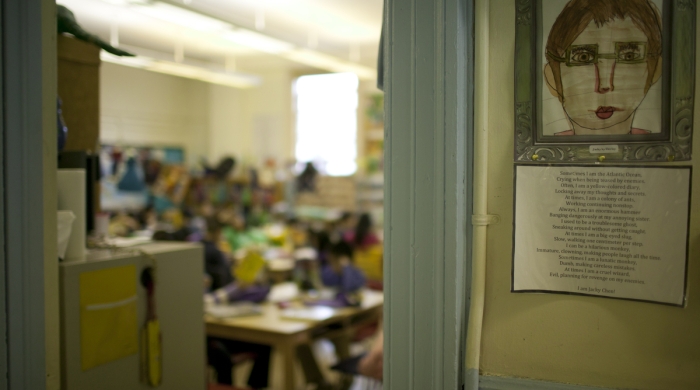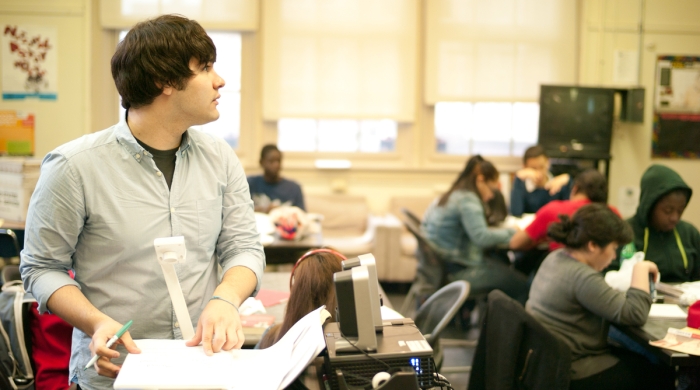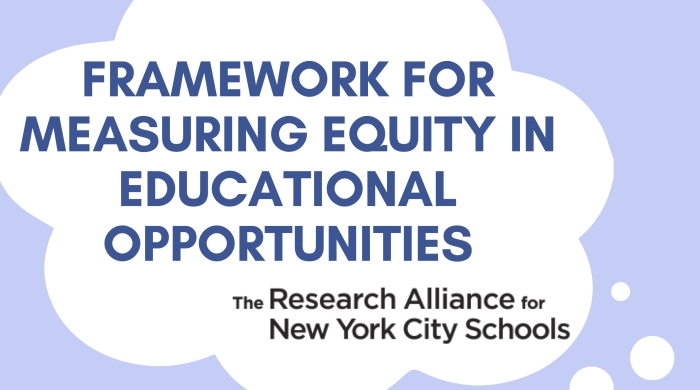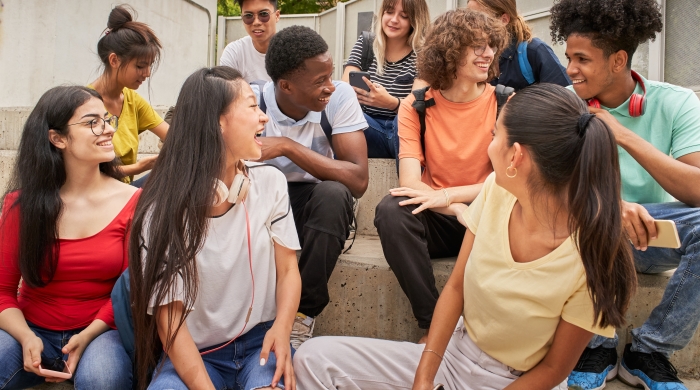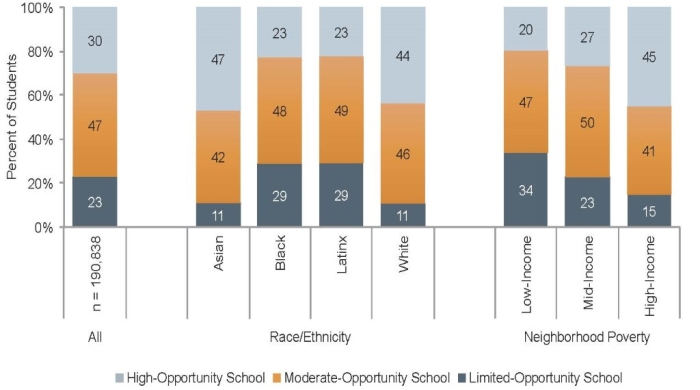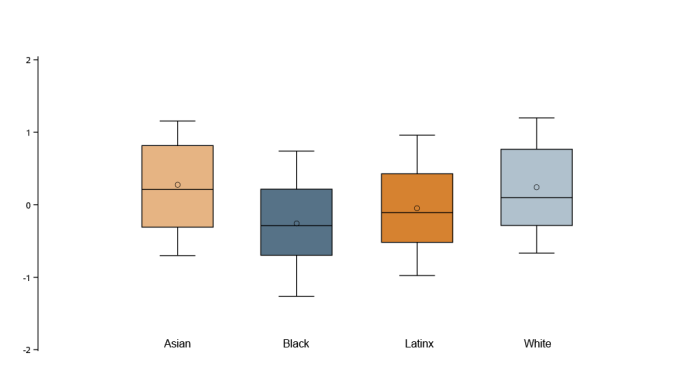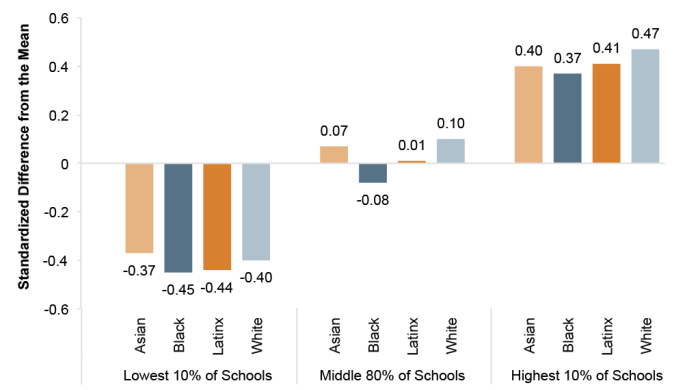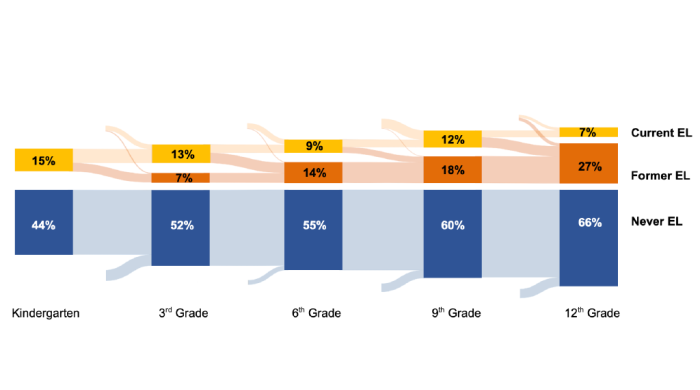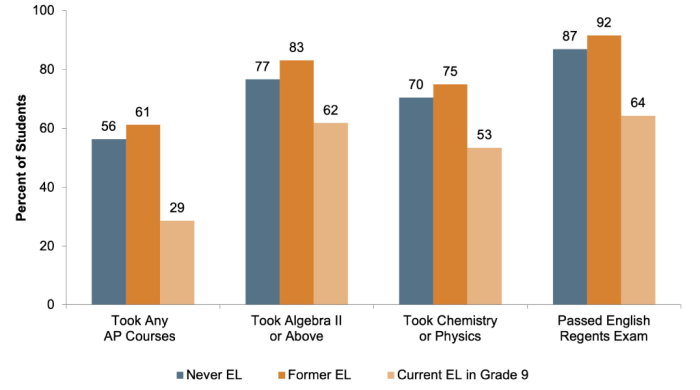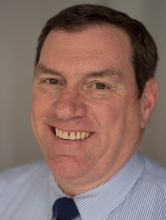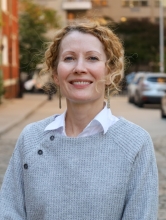Why Are Equity Indicators Needed?
For decades, federal, state and local accountability systems have focused on educational outcomes like test scores and high school graduation rates, revealing vast disparities between students on the basis of race/ethnicity and socioeconomic status. In our new project, we attempt to take a systematic account of the disparities in resources and opportunities that might be driving those unequal outcomes.
To that end, and in line with the recommendations in our recent Blueprint for Advancing Equity in NYC Schools, the Research Alliance is developing a set of education equity indicators aimed at informing policy decisions and enhancing public understanding of educational inequality in New York City. The work is closely aligned with The National Academies of Sciences Framework for Monitoring Educational Equity, which proposes 16 indicators designed to measure disparities in both academic outcomes and access to vital resources and opportunities, throughout K-12 education. The indicators cover 7 separate domains, including K-12 learning and engagement, access to high-quality curricula and instruction, and access to supportive school and classroom environments.
We have begun work on a set of indicators for New York City, which we ultimately hope will:
- Provide insight about the drivers of inequality in NYC schools;
- Help meet students’ needs at a time when the COVID-19 pandemic has exacerbated existing racial and socioeconomic inequalities;
- Identify promising leverage points to help City schools recover from the pandemic; and
- Orient the system toward greater accountability for improving equity over time.
We look forward to working with a wide range of stakeholders, over the next several years, to ensure that the indicators we develop yield authentic and actionable information about the City’s public schools. We welcome input from students, teachers, parents, administrators, school district officials, and community-based organizations about the kind of information they would find most useful. For technical information, visit our working technical appendix.
COVID-19 and Equity in Education
In 2021 we began an initial effort to develop education equity indicators for New York City as part of the COVID-19 and Equity in Education Project, supported by the Bill & Melinda Gates Foundation and the AIR Equity Initiative. This project took stock of key aspects of the City’s equity and opportunity landscape in the years leading up to the pandemic and laid the groundwork for assessing changes that have occurred in the wake of multiple upheavals connected to Covid-19. This included analyses of students’ high school outcomes (e.g., graduation and college enrollment rates), as well as key academic opportunities, such as their access to advanced coursework and a positive school climate. The analyses highlighted notable differences linked to race/ethnicity, neighborhood poverty and English learner status.
Building A Robust System of Equity Indicators for NYC Schools
With support from Carnegie Corporation of New York, the Research Alliance is now working to create a comprehensive set of education Equity Indicators designed to improve the public’s understanding of educational inequality in New York City and inform effective and lasting policy responses. Building on the National Academies of Sciences framework, the project will engage a range of local education stakeholders, including students and families, in developing and making sense of measures of educational opportunities and outcomes. Our goal is to leverage this input to produce a meaningful set of equity indicators, spanning PreK through college, which are flexible enough to capture various dimensions of students’ educational experiences, while also providing a consistent lens to measure changes over time.
Ultimately, we hope this work fosters a better understanding of the root causes of education disparities and the ways in which NYC schools can disrupt systemic racism and other forms of structural inequality. We strongly believe that information about learning gaps is only useful if it inspires action to help solve the problems that have been identified. In line with this, we will actively collaborate with partners across the NYC education system to develop and test interventions explicitly aimed at promoting more equitable experiences and outcomes.
Related Publications
Equity Indicators: Middle School Opportunities
This spotlight examines differences in middle school opportunities across NYC, focusing on access to accelerated coursework, the use of suspensions, and supportive school climate, including interactive graphics that reveal disparities associated with race/ethnicity, neighborhood income, IEP status, English Learner status, and gender.
Equity Indicators: Middle School Outcomes
This post focuses on equity in middle school outcomes, including differences by race/ethnicity, neighborhood income, IEP status, English Learner status, and gender. Outcomes examined include students' attendance, grades, test scores, and suspension rates.
New Work Highlights the Importance of Measuring Educational Equity
Two new spotlights emphasize the critical need to measure equity in public education. The analyses reveal disparities in key high school outcomes and opportunities, and provide insights that can inform a more effective and equitable educational landscape for all students.
Equity Indicators: High School Opportunities
To what extent do NYC high school students have equal access to educational opportunities? Our latest post examines differences between high schools that may curtail or support opportunities. The analysis reveals significant disparities in the availability of advanced coursework, non-exclusionary discipline, and supportive learning environments.
Equity Indicators: High School Outcomes
This post starts with a discussion of the reasons why it is important to monitor educational equity. Interactive graphs provide a look at attendance, on-track rates, graduation, and college enrollment for students with different background characteristics.
Introducing the Indicators of Education Equity Project
The first in a regular series exploring indicators of equity in NYC schools, this post examines differences in academic engagement and progress in high school and highlights important questions about the factors driving these disparities.
Access to Advanced Coursework in NYC High Schools
The second post in our series examines the degree to which students in NYC have had opportunities to take classes that would help them graduate from high school and prepare for post-secondary education, exploring how access to advanced coursework varies by race/ethnicity and neighborhood poverty.
How Equitable is Access to a Positive School Climate in NYC Schools?
The third post in our series examines how school-wide perceptions of school climate vary by race/ethnicity, finding that Black students, in particular, appear to attend schools with climates that are rated lower on average.
How Equitable is Access to a Positive School Climate in NYC Schools? Part 2
The fourth post in our ongoing series focuses on high schools with the highest and lowest average perceptions of climate, based on the composite measure that we introduced in our previous post.
How should we think about equity for English Learners in New York City?
This fifth post in our ongoing series on equity indicators turns to English learners, who represent a growing and increasingly diverse portion of the City’s student population.
What do we know about equitable access and outcomes for English Learners in New York City?
The sixth post in our ongoing series considers several indicators of access and opportunity for students as they move through high school.


